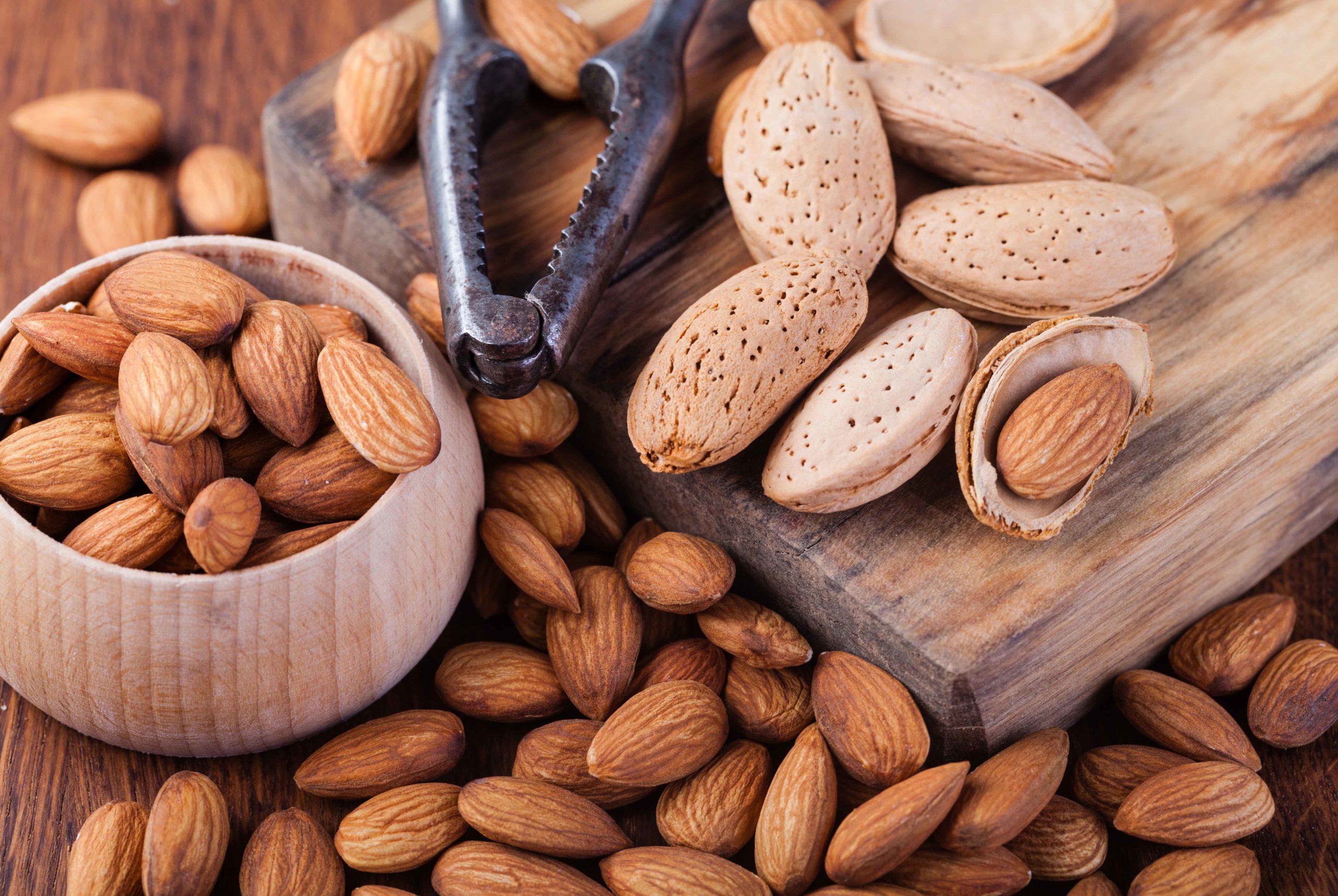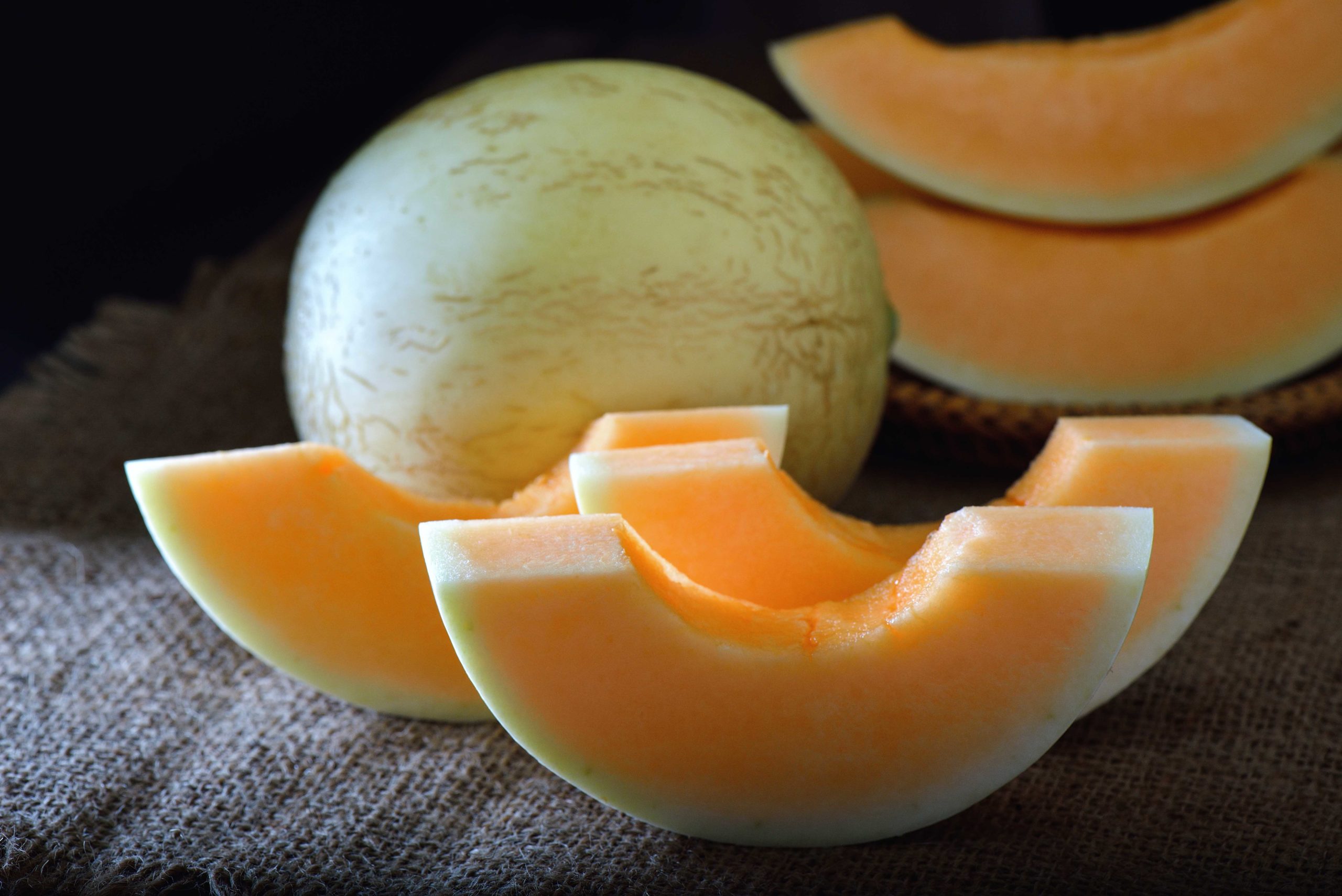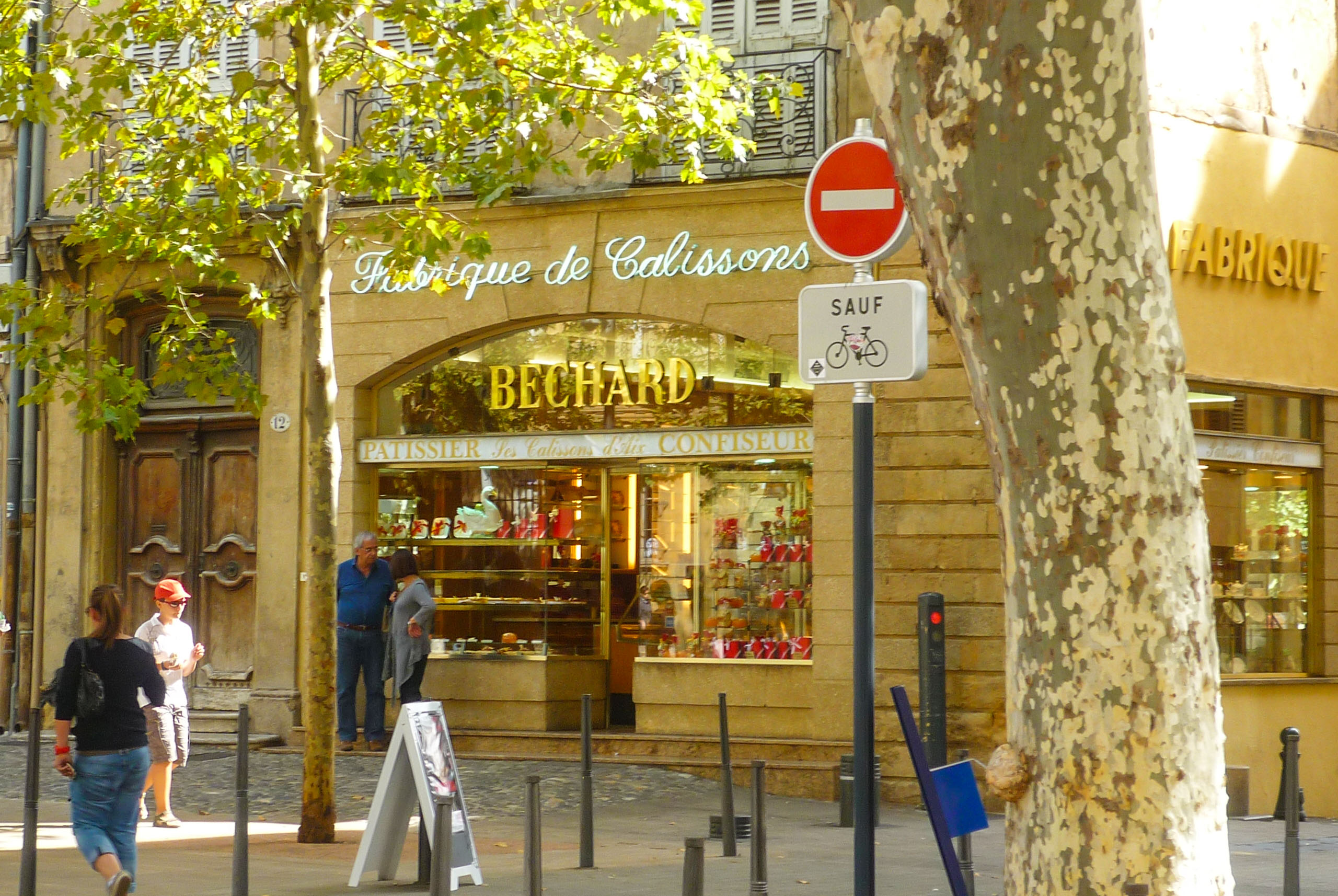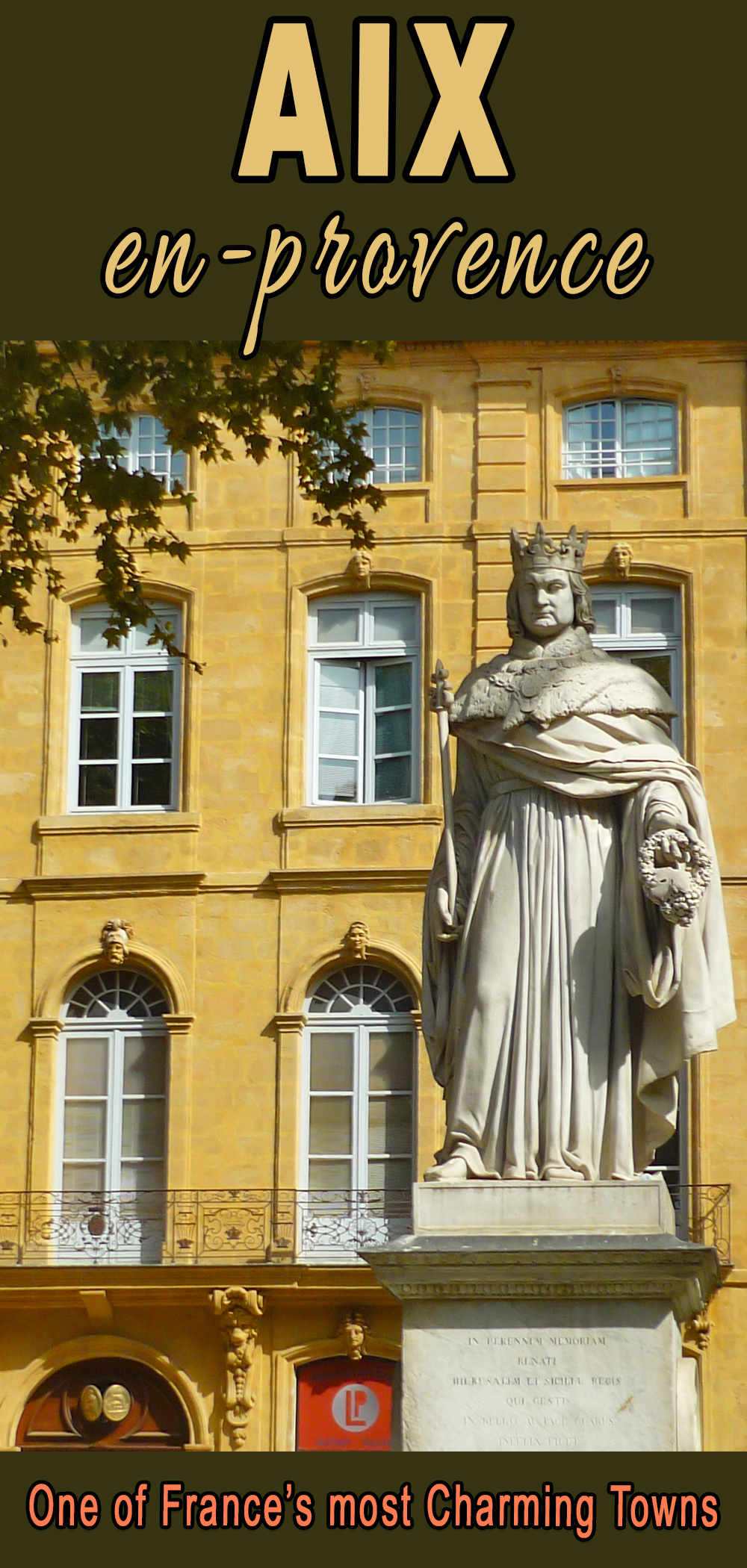The city of Aix-en-Provence and the delicious calissons have had a common destiny for several centuries. It is one of the emblematic delicacies of Provence and is one of the famous thirteen Christmas desserts. Let’s lift the curtain on this subtle mixture of almonds and candied melons.
What are calissons from Aix?
Calissons are a Provençal specialty candy composed of a light paste of crystallised melon and almonds crushed together. It is coated with royal icing and spread on unleavened bread.

A typical calisson is about 5 centimetres (2 inches) in length.
According to the legend, this lozenge-shaped treat has been a delicacy of Aix-en-Provence since the 15th century.
How are the calissons made?
The preparation of calissons is delicate and still requires a strictly artisanal production.
The well-kept recipe highlights some of the emblematic products of Provence such as almonds, orange blossoms and candied melon.
Only a few workshops in Aix still make calissons in the traditional way.
They follow an unchanging recipe which includes:
- 40% blanched almonds
- 60% candied fruit (or melon with a little orange)
- all of which are mixed with syrup and orange blossom water.
The creamy, fragrant paste is baked for half an hour. It is then left to rest for two days so that the flavours can blend and the ideal consistency reached.
The dough is then placed on a thin wafer base made of unleavened bread and carefully covered with royal icing (a mixture of icing sugar and egg whites). It is the latter that gives a calisson its characteristic satiny white appearance.
The calissons are shaped in moulds with removable bottoms, the housings of which are shaped like shuttles.
After cooling, the calissons are placed one by one in white boxes that reproduce their lozenge shape.
![Calissons of Aix © Mathsci - licence [CC BY-SA 3.0] from Wikimedia Commons](https://frenchmoments.eu/wp-content/uploads/2013/04/Calissons-of-Aix-©-Mathsci-licence-CC-BY-SA-3.0-from-Wikimedia-Commons-scaled.jpg)
A piece of advice: you must buy them when they are still very fresh and soft. Then keep them for a short time and away from heat and humidity because they tend to dry out quickly.
The main ingredients of the recipe
As mentioned above, the calissons of Aix have two main ingredients: almonds and candied melon.
Almonds and Provence
The almond tree originated in Mesopotamia and it was the Greeks and Romans who introduced it to Europe because they consumed it in large quantities.

However, the almond tree was not known in France until the 8th century, particularly in Provence, where the climate was favourable for its growth.
Olivier de Serres, the famous French agronomist, is credited with the first grafting of the sweet-fruiting almond tree, which came from Asia, onto the bitter-fruiting almond tree. From his estate in Pradel, near Privas in the Ardèche, his experience spread throughout the region and then the whole of southern France. Thus, the famous nougat of Montélimar also benefited from this agronomic advance!
In France, almond cultivation covered 1,700 hectares in 1990, down to only 1,142 hectares in 2017. Most of the almond orchards are in the départements of Bouches-du-Rhône, Alpes-de-Haute-Provence, Pyrénées-Orientales and Corsica. Production was 4,200 tonnes in 1990 and collapsed to reaching 799 tonnes in 2017. Therefore, today the almond trees of Provence and Corsica are no longer sufficient to meet French needs.

Thus, France imports large quantities of almonds from Sicily and Spain, whose qualities of shape and flavour are highly sought after. But some confectioners in Aix-en-Provence prefer to continue to buy from Provençal suppliers in order to reinforce the authentic and regional character of their calissons.
The Carpentras melon
The melon is a large, round fruit of a creeping plant with juicy, sweet flesh native to Asia. Since ancient times, the Mediterranean countries have appreciated its true value. It was Charles VIII who brought it back from Italy at the end of the 15th century.

The king coveted the kingdom of Naples and embarked on a warlike expedition. He failed miserably but did not return from Italy empty-handed! He brought back the Cantalupo melon, a papal estate near Rome. However, it was the popes who developed the cultivation of the Italian melon in their possessions near Avignon, particularly in Carpentras.
![Candied Melon © Arnaud 25 - licence [CC BY-SA 4.0] from Wikimedia Commons](https://frenchmoments.eu/wp-content/uploads/2013/04/Candied-Melon-©-Arnaud-25-licence-CC-BY-SA-4.0-from-Wikimedia-Commons.jpg)
Candied fruit of Apt
It is in Apt, at the foot of the Luberon, that the candied fruits of Provence have been produced since the 14th century, at the time of the Popes of Avignon. Back then, it was mainly plums and apricots, oranges and lemons (citrus fruits were rare and it was useful and precious to preserve them), but also dried fruits such as pine nuts, pistachios and hazelnuts.
![Apt Candied Melons © Véronique PAGNIER - licence [CC BY-SA 3.0] from Wikimedia Commons](https://frenchmoments.eu/wp-content/uploads/2013/04/Apt-Candied-Melons-©-Véronique-PAGNIER-licence-CC-BY-SA-3.0-from-Wikimedia-Commons-scaled.jpg)
Candying is simply the process of replacing the water that the fruit naturally contains with sugar. However, to obtain the ideal result, it takes several weeks and successive boiling in a more and more concentrated syrup, alternating with rest phases.
What are the variations of the calisson?
In addition to the traditional almond-based calisson, there is a whole range of different flavours. The basic recipe remains the same but the flavours vary:
- Fig
- Mandarin orange
- Raspberry
- Pear
- Chocolate hazelnut
- Lemon
Some Aix confectioneries compete in creativity with resolutely audacious combinations of flavours:
- raspberry and matcha tea,
- Luberon cherry and Vence rose,
- verbena and citrus fruit

Where do the calissons come from?
Mixing almonds and candied fruit is a gastronomic idea as old as the world and is not exclusive to Provence. Indeed, it can be found in other countries around the Mediterranean.
The delicacy made with almonds and candied fruit was called Kalistsounia in Greece and calisone in Italy (today it is called Ricciarello).
The legends of the Aix calisson
Legend has it that King René too often left his beautiful wife Jeanne of Laval to go hunting. Tired of waiting for the king’s hypothetical return, she finally succumbed to the advances of a young pastry chef who was madly in love with her. It was he who came up with this little melting candy to please her even more. The queen would have said in Provençal: Di calin soun! (“These are like cuddles”)

However, it was not until 1838 that the Dictionnaire de l’Académie included the Provençal word “calisson” in its pages.
Others prefer to tell a more conservative story. The delicacy made its appearance in 1473 in Aix-en-Provence at the wedding feast of King René.
Moreover, the shape of the calisson is the subject of many legends.
Does this oval shape originate in the mandorla of the Cistercian abbeys? (a mandorla is an almond-shaped aureola, i.e. a frame that surrounds the totality of an iconographic figure).
The origins of the word “calisson”
The word “calisson” comes from “calice” (chalice) and the Provencal diminutive “oun”, meaning “petit calice” (small chalice). “Calice” originally referred to the holy cup of the Eucharist and Communion itself. The calisson is indeed a kind of host.
However, it was not until 1838 that the Dictionnaire de l’Académie included the Provençal word “calisson” in its pages.
The true origins of the calissons
Calisson, which is already mentioned in medieval Latin in the 12th century, is closely related to several Italian terms, including “calisone”. In Padua and Venice, it was a confection made from almonds and flour. This type of cake, similar to modern marzipan, was made by monks and was apparently associated with festivals in the religious calendar.
It was only at the beginning of the 17th century that this candy crossed the border. In fact, it found in Provence an area favourable to its establishment and diffusion.
And why precisely in Aix-en-Provence? Simply because, historically, the town had the most important almond market in the region.
![Calissons of Provence © jean-louis zimmermann - licence [CC BY 2.0] from Wikimedia Commons](https://frenchmoments.eu/wp-content/uploads/2013/04/Calissons-of-Provence-©-jean-louis-zimmermann-licence-CC-BY-2.0-from-Wikimedia-Commons-scaled.jpg)
In memory of the plague
The 17th-century mention of the Aix calissons took place on the occasion of a religious ceremony in the church of Notre-Dame-de-la-Seds in commemoration of the plague of 1630.
The Church distributed the confectionery to the congregants on three annual occasions: Christmas, Easter and 1 September.
The archbishop blessed the calissons and presented them in church vases. Then, he duly offered them to those attending mass in the same way as hosts. (By the way, today’s calissons still rest on an unleavened bread sheet). The priest then pronounced the Latin formula “venite ad calicem” (come to the chalice or “venes touti au calissoun” in Provençal).
Some people still attribute the calissons with the power to preserve pious Catholics from the terrible contagion. Perhaps the calisson is the best remedy for Covid-19?! 😋
Where to buy calissons in Aix-en-Provence?
Here is a list of confectioneries in the old town where you can buy the delicious delicacies of Aix-en-Provence.
- Confiserie Léonard Parli, 15 rue Gaston de Saporta
- Confiserie du Roy René, 11 rue Gaston de Saporta
- Pâtisserie Weibel, 2 rue Chabrier
- Chocolaterie de Puyricard, 7 rue Rifle Rafle
- Confiserie Brémond, 16 ter rue d’Italie
- Maison Béchard, 12 cours Mirabeau
- Pâtisserie-Confiserie Philippe Segond, 67 cours Mirabeau

Calissons Trivia!
- Every year since 1995 the blessing of the Calisson has taken place in the Church of Saint-Jean-de Malte in Aix-en-Provence.
- More than 900,000 kilos of Calissons of Aix are produced each year.
- This speciality from Aix-en-Provence has had a PGI (protected geographical indication) since 2002. To qualify, the calisson must be produced in Aix on the one hand, and respect the recipe (specifications) on the other.
- The calissons are prepared with rather expensive ingredients and take a long time to prepare, which explains their relatively high selling price.

Aix-en-Provence: Find out more!
All our pages about Aix-en-Provence on the blog:
- Practical info for planning your visit to Aix-en-Provence
- Aix-en-Provence History: A Brief Account
- Cours Mirabeau, Aix-en-Provence
- Aix-en-Provence Cathedral: A Discovery Guide
- Place de l’Hôtel de Ville of Aix-en-Provence
- Place d’Albertas: an elegant square in Aix-en-Provence
- Aix-en-Provence Old Town: A Discovery Guide
- Montagne Sainte-Victoire: the iconic mountain of Aix
- Around Aix-en-Provence: 10 Beautiful Places to Visit
More info about Aix-en-Provence:
- Discover the historic and cultural region of Provence on the blog
- Visit the Tourist office board of Aix-en-Provence
- Read more about Aix-en-Provence old town on Wikipedia
- Book your accommodation in Aix-en-Provence
Things to do in Aix-en-Provence
Looking for activities and things to do in Aix-en-Provence old town and its surroundings? Check out the offers from our partner Get Your Guide:
Where to stay in Aix-en-Provence?
You can choose from a great range of accommodation in Aix-en-Provence, from hotels to B&B and campings! My recommendation is to book your accommodation near the city centre. Although it’s a more pricey option, you’ll save time on transportation and can access most of the 10 things to see within walking distance.
Also, when possible, don’t wait until the last minute to book as finding hotel rooms can be a problem, especially on weekdays.
To book your accommodation in Aix, click on this affiliate link which will redirect you to our partner booking.com… or use the interactive map below:
Pin the Calissons of Aix for later!


Featured image: Calissons of Aix. Photo by annapustynnikova via Envato Elements.





